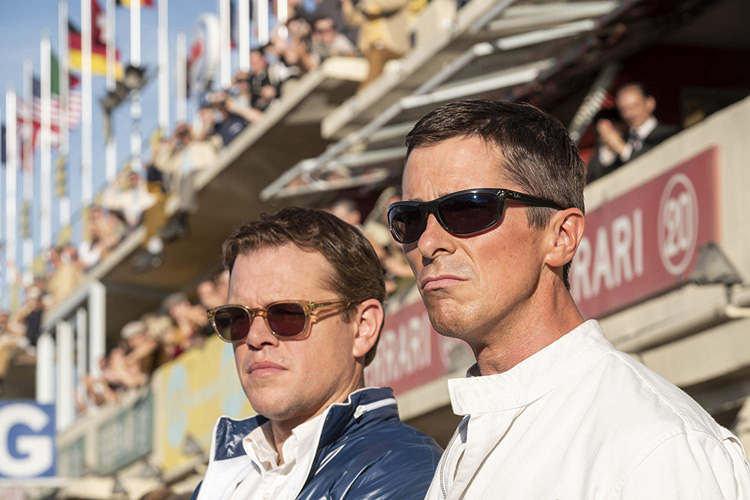Ford v Ferrari starts with someone driving a car (a reoccurring motif) while narration solemnly explains that life’s most important question is “who are you?” Kicking a racing movie into gear so philosophically is an exciting prospect—will it delve into the identities behind the wheel? Explore the deepening link between man and machine? Reveal that the competing car companies are an allegory for the inner conflict of humankind? Well, I’ll tell you this: by the time Ford v Ferrari ends and the narration re-asks its opening question, the movie will have done nothing interesting whatsoever.
That’s not necessarily a bad thing—the movie’s title is pretty clear about what to expect—but the opening monologue does set the bar a little higher. When the dust settles, though, Ford v Ferrari is loudly and proudly surface level. It’s the story of how an American underdog (the massively powerful Ford corporation) beat a foreign adversary on the racetrack with the help of two bankable stars. Break out the popcorn!
And ration it very carefully, because Ford v Ferrari is over two and a half hours and goes long stretches without any racing. Normally, human drama is needed to break up the scenes of full throttle intensity, but Ford v Ferrari drops the ball in the script department. It’s trying, which is commendable, but it tries in distinct, outsized bursts that don’t gel together. Every other line of dialogue is designed for maximum impact: here’s an INSPIRING line, then a HILARIOUS line, then a HEARTWARMING line—you have to give the pins time to reset before lobbing another bowling ball down the lane. The extra-heightened dialogue threatens to transform characters into caricatures.
One such caricature is the movie’s secondary antagonist. Ford v Ferrari, not content to settle for its titular conflict, also forefronts a back-and-forth between the drivers and a moustache-twirling Ford executive—between the artists and the corporate suits, if you will. This metaphor was also utilized in Coppola’s Tucker: The Man and His Dream (a misguided car film from the Godfather director), but like in Tucker, it’s cheapened by slavish dedication to convention. So as not to lose the broadest possible audience, the evil exec is little more than a grudge with a face, unanchored to any stimulating ideas.
And yet, despite it all, the racing scenes soar with four wheels off the ground. Like a finely tuned engine, the direction, editing, cinematography, and sound design work toward a unified goal: giving the cars tangible weight and precision. Intercutting between minor human inputs and sweeping vehicular movements keeps the stakes high, expertly building a visual call-and-response for the viewer to anticipate as racecars careen around the course. The close rumbles of the sound design, the tendency to keep shots of the cars low to the ground—they serve as reminders that these are heavy, hazardous machines, which helps maintain a palpable sense of danger. Whenever Ford v Ferrari is at the racetrack, its sheer force will have you pressed into the back of your seat.
The movie’s cast also does some salvage work. Matt Damon is the Honda Civic of the group—dependable, if unremarkable. Veteran actor Tracy Letts and promising newcomer Noah Jupe round out the best-performing models from old to new. But it’s Christian Bale who’s the, uh, Lightning McQueen of the cast. Bale is clearly having tons of fun, and not just because he gets to speak in something close to his actual accent. His role stems more from the heart than from the head, as he matches and then exceeds the movie’s defining qualities: big, brazen, and bound to leave you smiling, at least for a little while.
★★★ (3/5)




